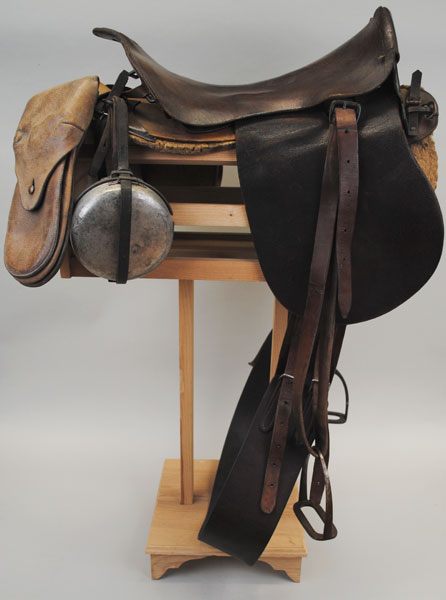
A New Century (1900-1920)Gilbert Beeman's Military Saddle |
|||
|
|||
Gilbert Beeman's 1902 Trooper's Saddle used during The Great War |
Dr. Milton Ira Beeman, a graduate of the University of Toronto, started his medical practice at Centreville, Ontario. While practising in Centreville, he met Lilian Louise Henault, a teacher at Tamworth. They were married in 1879 and raised a family of six children. The Beemans moved to Newburgh in 1894. In Newburgh, the Beeman built a large gabled Victorian house just east of the Methodist Church, locally known as the Doctor's House. DISCOVER MORE![]()
The Doctor's son, William Gilbert graduated from the Royal Military College in Kingston on June 22, 1905. He was commissioned to the Royal Canadian Artillery and posted to Quebec and later Halifax. In 1908, he attended the Artillery Staff Course and the Gunner Staff Course in England. In 1911, he was 27 years old, still living with his parents at the Doctor's House in Newburgh. His father died in May 1914, just months before the Great War erupted.
In 1915, Gilbert enlisted for active service in Halifax, Nova Scotia, with the rank of Captain. He was sent overseas to command the 9th Siege Battery, Royal Canadian Horse Artillery
On arrival in Britain, Canadian Cavalry and Artillery were issued the 1902 UP saddle. Gilbert's 1902 trooper's saddle has a Canadian Army mark and inspectors stamp and steel stirrup irons and riding spurs. To keep the weight of the rider with all his equipment from the horse's spine, military saddles were built on a frame made of two arches joined by sideboards lined with brown felt pads, shaped to fit the horse's back. Saddles supplied by Britain came with steel stirrup irons with a flat bottom. Gilbert Beeman's saddlebags and canteen are included with the saddle.
The Canadian Cavalry Brigade and other Mounted Troops from Canada were also issued 1908 Trooper swords and equipment from British stores.
Gilbert Beeman, seen here with General Sir Arthur Currie, first Canadian Commander of the Canadian Corps of the CEF, was mentioned in the Despatches twice and won the Distinguished Service Order for bravery. He continued to serve after hostilities and did not arrive back in Canada until June 1919.
© Lennox & Addington County Museum & Archives
97 Thomas Street East, Napanee, Ontario, Canada K7R 4B9
Funding provided by the Government of Ontario and the County of Lennox & Addington




